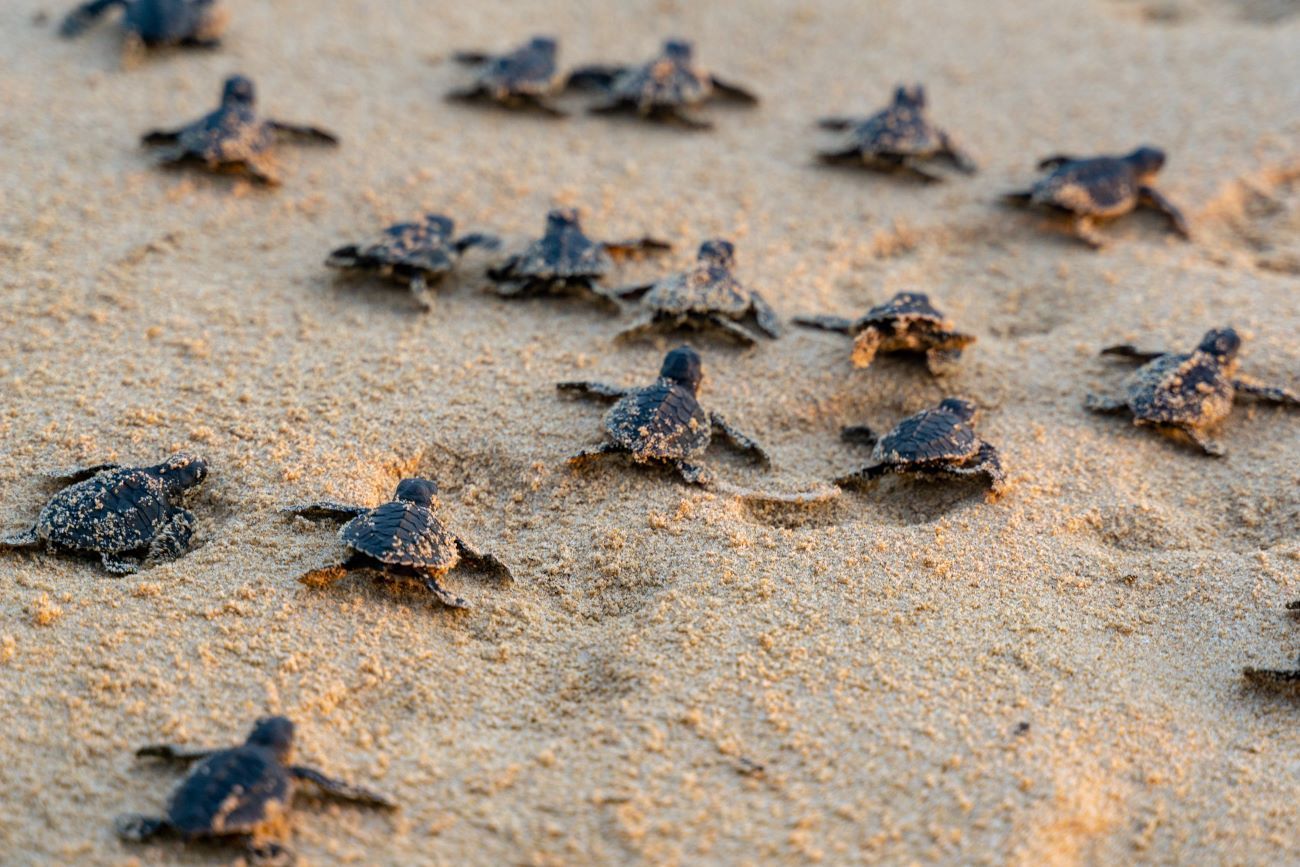Turtle Nesting Season Off To A Quick Start
Jessica A. Taylor • May 19, 2023
A Tale of Ancient Creatures and Dedicated Volunteers

Sea Turtle Nesting Season has taken off on the Alabama Gulf Coast Beaches with around seven nesting sites marked so far only 18 days into the 2023 season. Each year, we share our beaches from May through October with female Sea turtles looking for safe places to nest. These ancient creatures, on average, lay over 100 leathery ping-pong-sized eggs each on our beaches. Share the Beach volunteers cover 47 miles of the beachfront coastline every morning during these months looking for new nests.
This year, the Fort Morgan Team is delighted to have three nests three days in a row. Volunteer Lisa Looney describes her volunteering experiences over the years as miraculous and something that becomes “very near and dear to your heart.” The patrollers scan the white sandy beaches looking for crawl tracks. According to www.joinACF.org, each of the three species of turtles that nest in Alabama have unique crawl tracks. Sometimes the tracks are called “false crawled” meaning the turtles turned back without nesting their eggs. This can happen for many reasons. Here are a few things we can do to help make sure the turtle nesting season happens safely.
Natural lighting is vital, especially after the 55 to 70-day incubation period is over, and the turtles begin hatching. Experts ask that all beachfront lights be turned off and that if you see one, you don’t use flashlights or flash cameras on the beach to get a better look. The team uses a special light when needed. Always make sure to bring everything you brought with you to the beach back when you leave, level out any sandcastles and fill any holes. Anything left can get in the way of the Momma turtle’s trek from water to chosen nesting spot. When the females are ready to lay eggs, they often go back to the same beach they hatched from. This is called (natal homing). Sometimes they will choose a different beach, however, always find their way back to the same general region they were once little hatchlings in.
Sea turtles are a protected species, the Loggerheads (most commonly found here), the Kemp’s Ridley and Green Sea Turtles are all protected under the Endangered Species Act, making disturbing the nest in any way illegal. The unassuming hero better known as the Share the Beach volunteers leads out at daybreak each morning. Looney explains, “You are in an element in the morning that’s just so undisturbed and close to nature.” Besides the obvious serenity of a quite unhampered beach, these early rising walks are purposeful. Many disturbing contributors like wind and waves can throw off tracks and make it more difficult to determine what species the tracks are from. Moreover, it is the footprints and other human undertaking that will cover the tracks throughout the day.
Volunteers not only get the chance to possibly experience the excitement of finding a nest or being there for hatch days, but also have a guaranteed sunrise to look forward to on their scheduled patrol days. Orange Beach Volunteer Jennifer Lawrence happily states, “I love my turtle walks because I know I’m going to be on the beach at least one day a week, and I’ll see a beautiful sunrise.” Lawrence captured the spectacular sunrise photo featured below on her walk this week, with no nest or tracks at this location yet. The season is hopeful to follow and even excel from last season’s leading numbers. According to Mole.org, Alabama Beaches for the 2022 season ranked its fourth highest nesting season to date in the 40-year history of the program.
-

Slide title
Write your caption hereButton 
Slide title
Write your caption hereButton-

Slide title
Write your caption hereButton -

Slide title
Write your caption hereButton -

Slide title
Write your caption hereButton -

Slide title
Write your caption hereButton -

Slide title
Write your caption hereButton
-

Slide title
Write your caption hereButton -

Slide title
Write your caption hereButton -

Slide title
Write your caption hereButton -

Slide title
Write your caption hereButton -

Slide title
Write your caption hereButton -

Slide title
Write your caption hereButton -

Slide title
Write your caption hereButton -

Slide title
Write your caption hereButton
-

Slide title
Write your caption hereButton -

Slide title
Write your caption hereButton -

Slide title
Write your caption hereButton -

Slide title
Write your caption hereButton -

Slide title
Write your caption hereButton -

Slide title
Write your caption hereButton -

Slide title
Write your caption hereButton
Recent Posts



Subscribe to our
Newsletter
Our newsletter is focused on bringing you the latest in news, events and weather for the coastal Alabama area.
